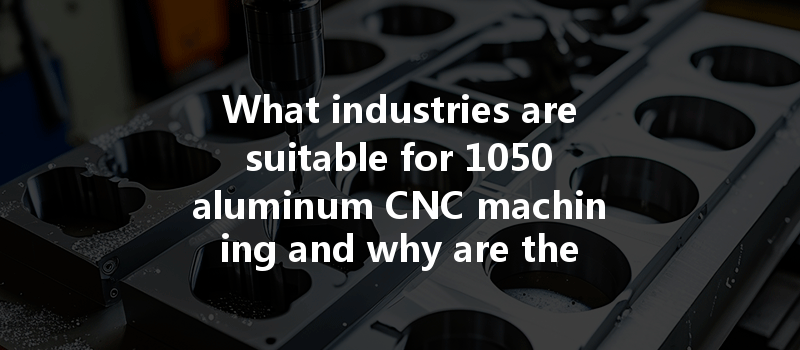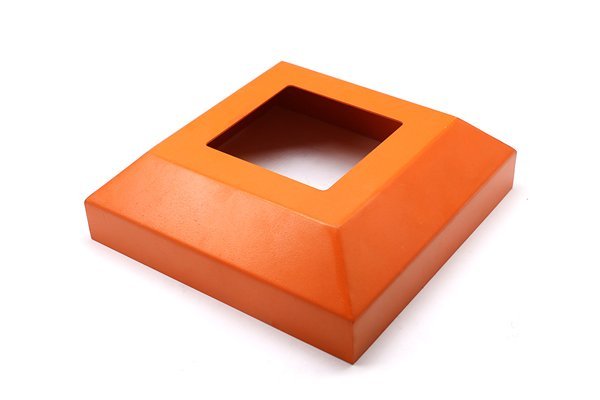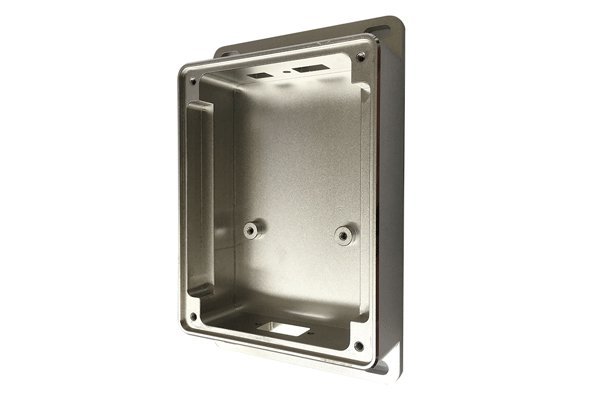: The Light, Versatile Power of Aluminum
Did you know that aluminum is the most abundant metal in the Earth’s crust, accounting for approximately 8% of its weight? With such a significant presence, its applications across various industries are both abundant and vital. Among the multitude of aluminum alloys, 1050 aluminum stands out due to its excellent corrosion resistance, thermal conductivity, and ease of machining, making it a popular choice for CNC machining in several sectors.
In this blog, we will delve deeper into the myriad industries that leverage the unique properties of 1050 aluminum through CNC machining, exploring the practical applications, benefits, and considerations that come with its use in various manufacturing processes.
Understanding 1050 Aluminum
Properties of 1050 Aluminum
Before we dive into the industries that utilize this alloy, let’s take a moment to understand what makes 1050 aluminum special.
Applications of 1050 Aluminum in CNC Machining
Due to these properties, a diverse range of industries utilize 1050 aluminum in their CNC machining processes. Let’s explore some of the most notable sectors that benefit from this versatile material.
Industries Utilizing 1050 Aluminum CNC Machining
The aerospace industry is one of the primary consumers of aluminum and its alloys due to their lightweight and high-strength attributes.
The automotive sector has seen a significant shift toward lightweight materials, and 1050 aluminum plays a critical role.
Electrical engineers favor 1050 aluminum for its superior electrical conductivity.
The versatility of 1050 aluminum finds extensive application within the construction sector as well.
The consumer electronics industry increasingly embraces 1050 aluminum in order to optimize product designs.
Interestingly, 1050 aluminum is also used in the food and beverage sector.
Due to its corrosion-resistant properties, 1050 aluminum is also highly sought after in the marine industry.

Benefits of CNC Machining with 1050 Aluminum
The manufacturing industry has been transformed by advancements in CNC machining technology. When paired with 1050 aluminum, these benefits become even more pronounced.
Precision and Accuracy
CNC machining provides unparalleled precision, allowing manufacturers to create complex geometries with tight tolerances. This is crucial in industries such as aerospace and automotive, where every millimeter counts.
Cost-Effectiveness
Although the initial setup for CNC machining may be higher, the efficiency gained can lead to cost savings over time. Additionally, 1050 aluminum is relatively inexpensive compared to other alloys, making it a cost-effective option for manufacturers across various sectors.
Reduction of Waste
CNC machining enables the use of advanced software that optimizes the cutting process, minimizing waste. This eco-friendly approach is increasingly becoming a priority for companies seeking to reduce their environmental footprint.
Short Lead Times
With CNC machining, manufacturers can produce components in relative short lead times, allowing for quicker responses to market demands. This is particularly important in fast-paced industries where time-to-market can significantly impact competitiveness.
Customization
The ability to create customized parts and components is a major advantage of CNC machining. Companies can easily produce bespoke solutions that cater to specific requirements, adding value to their products.
Challenges of CNC Machining with 1050 Aluminum
While 1050 aluminum is highly advantageous, manufacturers must also be mindful of some challenges inherent in CNC machining.
Tool Wear
Soft materials like 1050 aluminum can lead to increased tool wear during machining. This necessitates the use of high-quality cutting tools and regular maintenance schedules to ensure optimal productivity.
Cutting Speed
Finding the right cutting speed is crucial. Too high of a speed can cause excessive heat, affecting the material properties, while too low can lead to longer production times.
Surface Finish
Achieving the desired surface finish may require additional machining or finishing processes. This can impact lead times and production efficiency, particularly if stringent surface quality standards are in place.
Solutions to Challenges in CNC Machining with 1050 Aluminum
Regular Tool Assessment
By regularly monitoring the condition of cutting tools, manufacturers can preemptively address issues related to tool wear, ensuring consistent product quality.
Optimal Cutting Parameters
Setting optimal cutting speeds and feeds can accommodate the unique properties of 1050 aluminum, enhancing machining efficiency and component quality.
Post-Machining Finishing Techniques
Utilizing strategies such as anodizing or polishing can improve the surface quality of machined aluminum parts, adhering to the specific aesthetic or functional requirements of different applications.
Future Trends: Innovations in 1050 Aluminum CNC Machining
As technology continues to advance, several trends are shaping the future of 1050 aluminum CNC machining:
Smart Machining Solutions
Integrating IoT and AI technologies will enable manufacturers to gather data on production processes, facilitating real-time adjustments, and improving overall efficiency.
Sustainable Practices
With an increased emphasis on sustainability, manufacturers are exploring eco-friendly approaches to machining, including the use of biodegradable lubricants and recycling scrap material generated during production.
Advanced Software and Automation
Adopting automation technologies and advanced software for CNC programming will simplify the machining process and reduce lead times.
: The Importance of 1050 Aluminum CNC Machining Across Industries
In summary, 1050 aluminum CNC machining presents unparalleled advantages across a diverse range of industries, from aerospace and automotive to electronics and construction. The properties that make 1050 aluminum a preferred material—high purity, corrosion resistance, and ease of machining—combined with the precision, cost-effectiveness, and flexibility of CNC machining have solidified its importance in modern manufacturing.
Understanding the challenges and solutions associated with machining this alloy not only enhances productivity but also opens the door to innovative applications that meet the ever-changing needs of various sectors. For manufacturers looking to remain competitive, investing time in exploring the intricacies of 1050 aluminum and its machining processes is not just beneficial; it is essential for thriving in today’s fast-paced market.
As industries continue to evolve, readers are encouraged to consider the implications of 1050 aluminum CNC machining and its potential to drive efficiency, sustainability, and innovation within their operations. By grasping these concepts, organizations can position themselves better for future growth and success.






